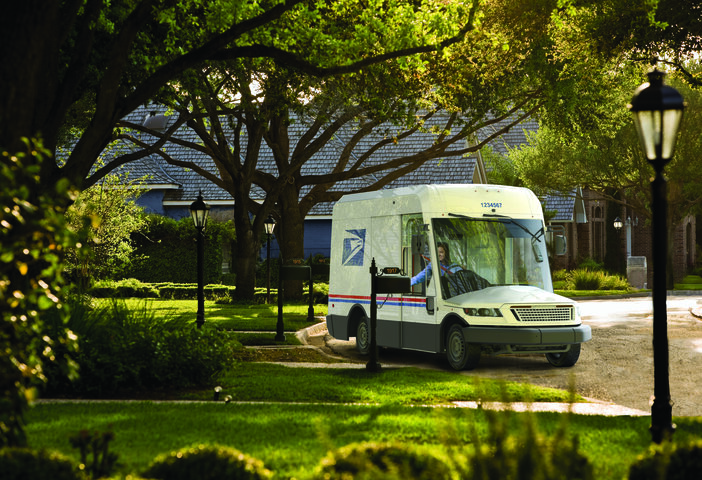The United States Postal Service (USPS) has released its 10-year Plan, ‘Delivering for America’, that will see the operator make US$40bn in capital investments to return the organization to financial sustainability and achieve service excellence while maintaining universal six-day mail delivery and expanding seven-day package delivery.
The plan includes a combination of investments in technology, training, post offices and a new vehicle fleet; modernizing the Postal Service’s processing network; adopting best-in-class logistics practices across delivery and transportation operations; creating new revenue-generating offerings in the rapidly expanding e-commerce marketplace; and pricing changes as authorized by the Postal Regulatory Commission.
“The need for the US Postal Service to transform to meet the needs of our customers is long overdue,” said Postmaster General and chief executive officer Louis DeJoy. “Our plan calls for growth and investments, as well as targeted cost reductions and other strategies that will enable us to operate in a precise and efficient manner to meet future challenges, as we put the postal service on a path for financial sustainability and service excellence.”
DeJoy continued, “The Postal Service’s problems are serious but, working together, they can be solved. Our 10-year plan capitalizes on our natural strengths and addresses our serious weaknesses. It ensures that we can better meet the nation’s evolving delivery needs, and do so with the higher degree of efficiency, precision and reliability that our business and residential customers expect and deserve. It can and must be done.”
According to USPS, the plan was developed through a rigorous and holistic process that included reviewing reports by the Office of the Inspector General (OIG) and the Government Accountability Office (GAO), and consulting with numerous stakeholder groups.
Some of USPS’s planned investments include a recent multibillion-dollar contract to modernize the Postal Service’s delivery vehicle fleet [read more here], which is over 28-years old on average and unsuitable for accommodating growing package volume. The first of the new vehicles are expected to appear on carrier routes beginning in 2023. Other planned investments include advanced package processing equipment; Post Office and facility upgrades; deployment of new mobile devices for carriers; new employee uniforms; best-in-class information technologies across the enterprise; and enhanced training and development to empower the workforce.
“Investing in the Postal Service’s future means investing in our people,” said DeJoy. “For too many years, postal employees have been asked to do more with less – forced to employ antiquated systems, utilize outmoded equipment, and drive outdated vehicles. This drives up costs and slows down service for customers. We cannot afford to keep this up. We believe firmly in putting the 644,000 women and men of the Postal Service in the best possible position to succeed in their mission of service, while also enabling a more predictable progression from non-career employees into the career workforce. Our goal is to significantly reduce non-career annual turnover rates.”
The Plan also identifies several strategies to leverage USPS’s end-to-end delivery network to generate US$24bn in new package net revenue growth and meet business and consumers’ rapidly evolving e-commerce needs. This includes a new suite of services called USPS Connect, connecting businesses, large and small, to urban and rural communities across the nation. The Postal Service will expand its core package products, namely Priority Mail, Priority Mail Express, First-Class Package Service and Parcel Select to offer same day, next day and 2-3 day delivery options, six to seven days a week.
Other offerings will include an enhanced Informed Delivery platform, enabling business and residential users to do more, such as provide carriers instructions on where to leave or pick-up packages, notify USPS to hold mail, or schedule redelivery of packages before important items reach their mailboxes. Through these and other actions, the Plan also strengthens the mail channel for the nation’s commercial and personal needs.
To drive greater network efficiency, the Postal Service will submit filings with the Postal Regulatory Commission to modify the service standards for First Class Mail Letters and Flats, as well as First Class Package Service. These modifications will shift volume from unreliable air transportation to more reliable ground transportation and enable network improvements that will allow USPS to meet or exceed 95% on-time delivery across mail and shipping product classes. First Class Mail traveling within a local area will continue to be delivered in one or two days and 70% of First-Class Mail will continue to be delivered within three days or less.
The Postal Service also anticipates using its processing facilities differently to reflect the dramatic increase in package volume and declines in mail volumes, and accommodate new revenue generating e-commerce offerings to better meet the needs of our customers. The plan anticipates an evaluation of facility operations, using the applicable regulatory processes.
The most significant item the Postal Service is asking the 117th Congress to pass is legislation to require that retiree health benefits be integrated with Medicare, and that the expense associated with these benefits be based on vested benefits, which would reduce the Postal Service’s cash flow expenses by approximately US$44bn over 10 years. Legislation is also being supported to address burdensome retiree health benefit prefunding.
In addition, in the coming weeks, the Postal Service will submit a number of filings with the Postal Regulatory Commission regarding pricing, products and services, and infrastructure.
To learn more and view the full Plan, visit www.usps.com/deliveringforamerica.


